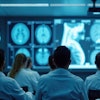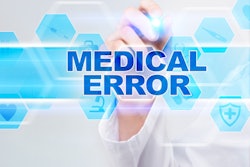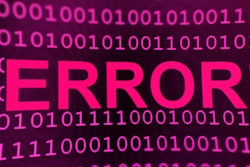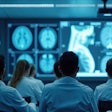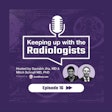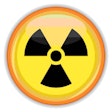
Medical students who learn about diagnostic errors during their training will gain awareness of the causes of mistakes and can identify steps to reduce patient harm in daily work, according to research published June 30 in Academic Radiology.
Researchers led by Dr. Jonelle Petscavage-Thomas from the department of radiology at Penn State University created an elective course for medical students that focused on diagnostic errors. They found that students responded positively to the course and would employ skills they learned into practice.
"To our knowledge, our elective is the first dedicated medical student-focused curriculum devoted to diagnostic error provided by a radiology department," the study authors wrote. "This course could easily be replicated at other institutions with interested faculty and medical school support."
Diagnostic errors account for up to 70% of all medical errors, according to previous research.
"It is estimated annually that there are 12 million Americans impacted by diagnostic errors," Petscavage-Thomas and colleagues noted. "Diagnostic errors contribute to 40,000 to 80,000 deaths each year in the U.S."
But medical error can be a new concept to medical students and even faculty, the researchers said, and they are difficult to measure. This is because there are no definable criteria, time of follow-up to identify diagnostic errors is lengthy, and retrospective review of medical records is resource-intensive, according to the authors. What's more, even expert reviewers may not agree that errors occurred.
The two-week, in-person course at Penn State was offered to third-year medical students starting in January 2018. It was expanded to fourth-year students due to the COVID-19 pandemic, when the course was offered virtually. Eleven sessions were held with 29 total students.
All students were required to complete a project that addressed diagnostic error. A total of 12 projects from 11 groups were completed, 7 of which have been accepted for presentation at national meetings. Radiologists served as mentors for all projects.
On a scale of 1 to 5, with 5 being the highest, students rated their educational experience at an average score of 4.61.
When asked if they would apply what they learned about clinical decision-making to reduce patient harm in future practice, the students responded with an average score of 4.75. They also said they would recommend the course to other students.
Some students are continuing to work on projects presented in class in greater depth with the hope of eventual publication.
Subjective comments were all positive, the researchers said. The comments focused on the benefit of exposure to new topics, mentorship by radiologists, and ability to complete a project in such a short time.
"A potential improvement for the medical students would be to utilize residents as mentors for the medical student course on diagnostic error," Petscavage-Thomas and colleagues concluded. "This would also be beneficial for the residents and assist in completing their required quality improvement projects."


